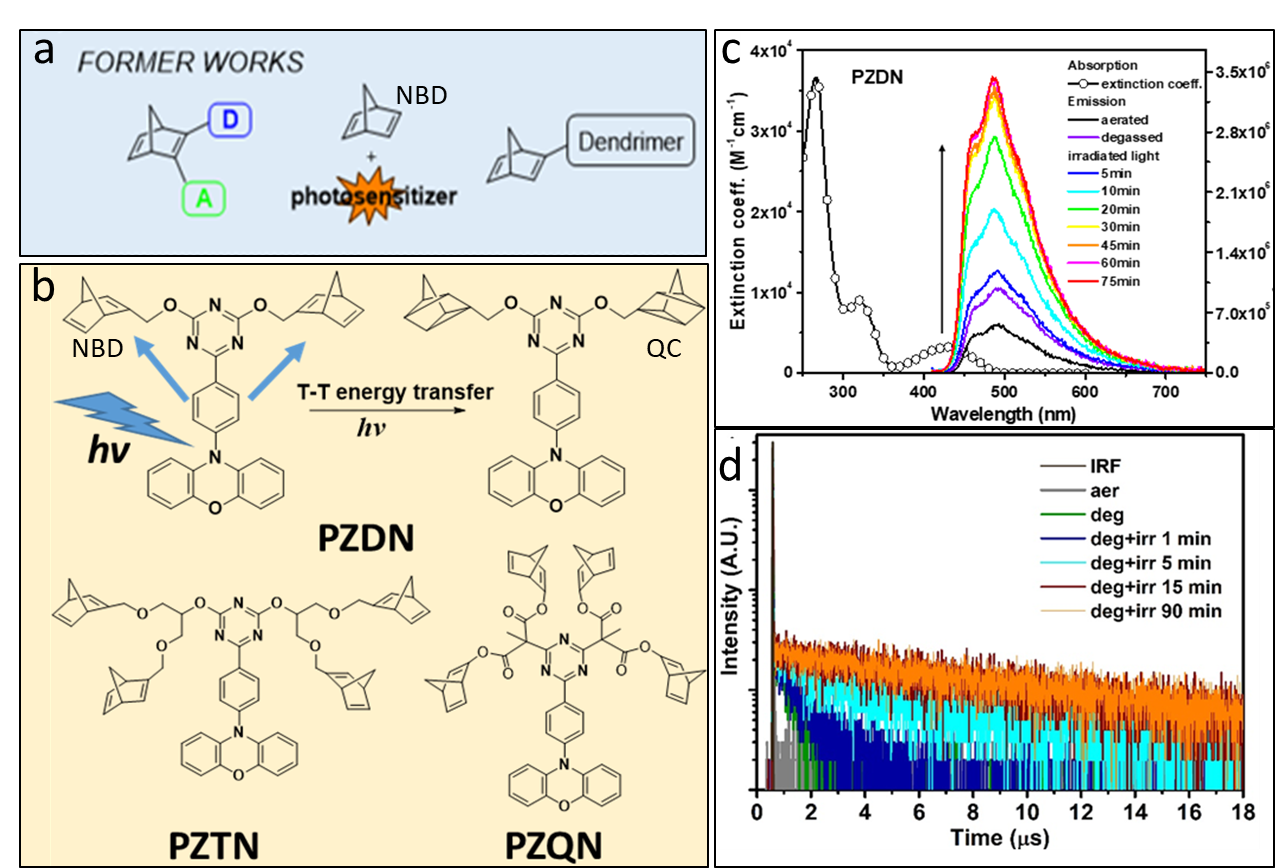- The full article entitled “A New Approach Exploiting Thermally Activated Delayed Fluorescence Molecules to Optimize Solar Thermal Energy Storage” can be found at the Nature Communications website at https://www.nature.com/articles/s41467-022-28489-0
- Authors: Fan-Yi Meng, I-Han Chen, Jiun-Yi Shen, Kai-Hsin Chang, Tai-Che Chou, Yi-An Chen, Yi-Ting Chen, Chi-Lin Chen, Pi-Tai Chou*
We propose a new concept exploiting thermally activated delayed fluorescence (TADF) molecules as a photosensitizer, storage unit and signal transducer to harness solar thermal energy storage via coupling with norbornadiene (NBD) → quadricyclane (QC) reaction (see Figure 1b). The proof of concept is made by synthesizing molecule composites based on a TADF core phenoxazine–triphenyltriazine (PXZ-TRZ) anchored with norbornadiene, yielding compounds PZDN and PZTN with two and four NBD units, respectively (Figure 1b). Upon visible-light excitation, energy transfer takes place to the triplet state of NBD, followed by the NBD → quadricyclane (QC) conversion that can be monitored by changes of steady-state or time-resolved fluorescence (Figure 1c and 1d). The small S1-T1 energy gap offers advantage in optimizing solar excitation wavelength. Upon tuning the molecule’s triplet state-energy lower than that of NBD’s (61 kcal/mol), demonstrated by another composite PZQN, the efficiency of NBD → QC conversion decreases drastically. Upon catalysis, the reverse QC → NBD reaction takes place at room temperature, bring the stored chemical energy back to heat with excellent reversibility.

Figure 1. (a) Previous reports on the NBD photosensitization work (b) current energy storage systems for of the MOST process in the NBD-QC system. (c) The fluorescence intensity as a function of the photolysis time. (d) The lifetime of delayed fluorescence as a function of the photolysis period.